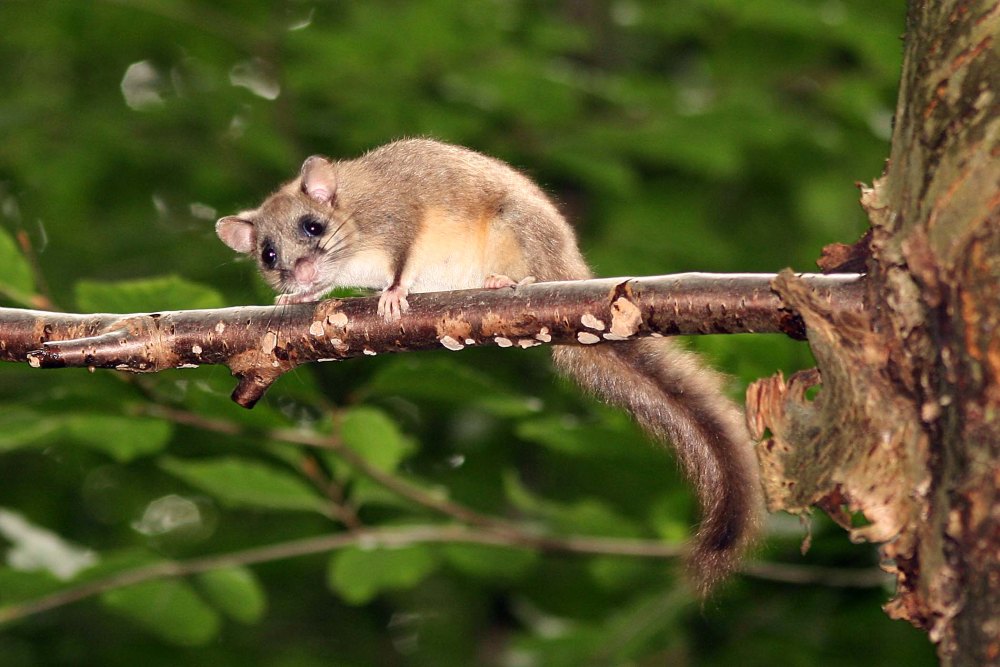Fat (or Edible) dormouse

Status
Non-native, localised
Population
23,000
Scientific name
Glis glis
Fat dormice are native to Central Europe and were introduced into a park in Hertfordshire by Walter Rothschild in 1902. They look like small, fat grey squirrels with long, black whiskers and large eyes and ears. They are much larger than the native, hazel dormouse and are called ‘edible’ because they were often eaten, especially in Roman times. Edible dormice are nocturnal and spend most of their time in the tree canopy or buildings. During the day, they rest in nests, similar to squirrel dreys, in trees or roof spaces. They are often found in groups and can sometimes become a nuisance. Up to 30 have been removed from the attic of a single house. They come down to the ground to hibernate in response to low temperatures and reduced food availability, finding sites under tree roots or in the burrows of other animals. They hibernate from September until May.
Head-body length: 13 – 19cm
Tail length: 12 – 15cm
Weight: 50 – 250g
Lifespan: Up to eight years
Reproduction
A single litter of up to usually seven blind and hairless pups is born between mid-July and September. Their fur is well developed by 16 days and they open their eyes about a week later. They stay in the nest for about 30 days. Mothers and daughters may share a nest and nurse their young communally.
Diet
Flower buds, insects, tree bark, beech mast, fruits (especially blackberries and elderberries), acorns and occasionally birds’ eggs.
Habitat
Extensive and well-connected sites of mixed woodland including beech and conifer trees; they frequently live in buildings, including occupied houses.
Predators
Tawny owls, stoats, weasels and cats.
Threats
Poor mast years cause high mortality in juveniles during the winter.
Conservation status
As an introduced species, a GB Red List assessment hasn’t been made. Global Red List: Least Concern (LC).
Population size and distribution
23,000 (absent in Scotland and Wales). Locally common in the Chilterns, largely within 35km of Tring Park where they were introduced at the beginning of the 20th century.
Did you know?
If a predator grabs a fat dormouse by the tail, the skin of the tail comes off allowing the dormouse to escape. The dormouse can only do this once however, because the exposed tailbones soon break-off and do not re-grow.
